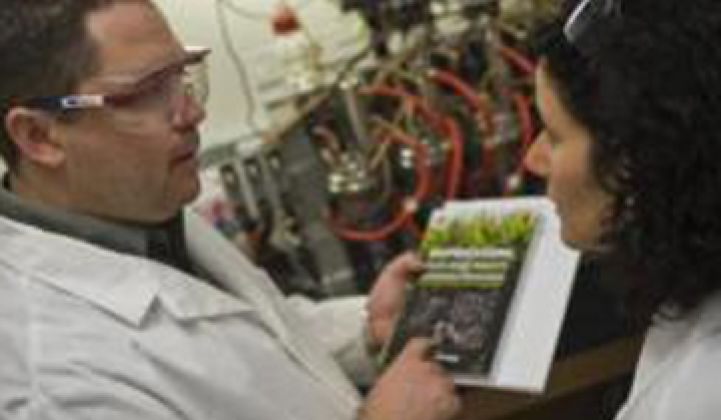Microorganisms can work chemical wonders, turning forest waste into fuel.
Unfortunately, they also aren't very fast.
Rice University researchers have come up with a way to cure this persistent problem that, if put into practice, could dramatically lower the price and increase the volume of biofuel production. The new technique essentially would allow genetically modified organisms to generate fuel up to ten times faster than their GMO cousins do it now. Put another way, a 30-million-gallon-a-year plant could conceivably become a 300-million-gallon-a-year plant.
The first commercial application could be the production of a renewable form of butanol, used as jet fuel.
The organisms also feed on glucose and mineral salts, some of the cheapest feedstocks around, rather than designer sugars, says Ramon Gonzalez, an associate professor of biomolecular engineering at the university.
Here's how it works. Most biofuel/biochem companies focus their efforts on optimizing the segment of the metabolic process responsible for creating fatty acids. Complex fatty acids, however, aren't easy to make and many companies have struggled with trying to engineer microorganisms that can make acids with a specific number of carbon atoms.
Gonzalez and his graduate students focused instead on the beta oxidation cycle that occurs during metabolism. "Metabolism" itself is a catch-all phrase that includes processes for breaking down molecules as well as processes for building new ones. Beta oxidation is used to break down substances: think of it as cellular-level digestion. Nearly every living thing, from yeast to humans to fish, employs beta oxidation. Roughly speaking, the process strips carbon atoms, two at a time, off of fatty acids. These two-carbon units then become Lego-like building blocks for new acids.
The Rice team reversed the process so that beta oxidation adds two carbon atoms. It only required manipulating around 12 genes.
Elegant, no?
The process was tested on a genetically modified strain of E. coli, the workhorse of the microbiology world, but it should work in yeast, the microbe of choice for many biofuel companies.
Although oil prices have dropped in recent weeks, interest in biofuels has been rising over the past year amid worries about increased consumption in China, long-term price hikes and peak oil. Solazyme (optimized algae), Gevo (isobutanol from GMOs) and Amyris (a bug that can convert sugar into a 15-carbon hydrocarbon) have all held IPOs.
It will likely take years until a new generation of microbe fuels hit the market in appreciable volumes and it will no doubt take the cooperation of industrial giants. But interest among the incumbents is growing. Cargill is one of the principal partners of Gevo and Solazyme with the U.S. Navy, Chevron and Bunge.



